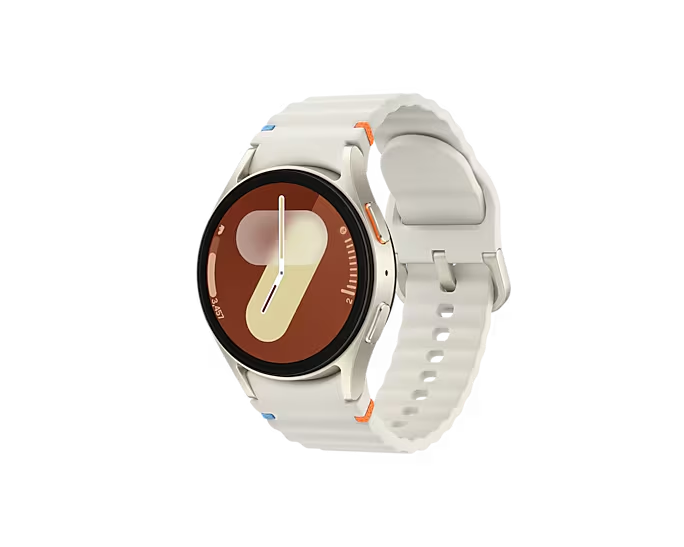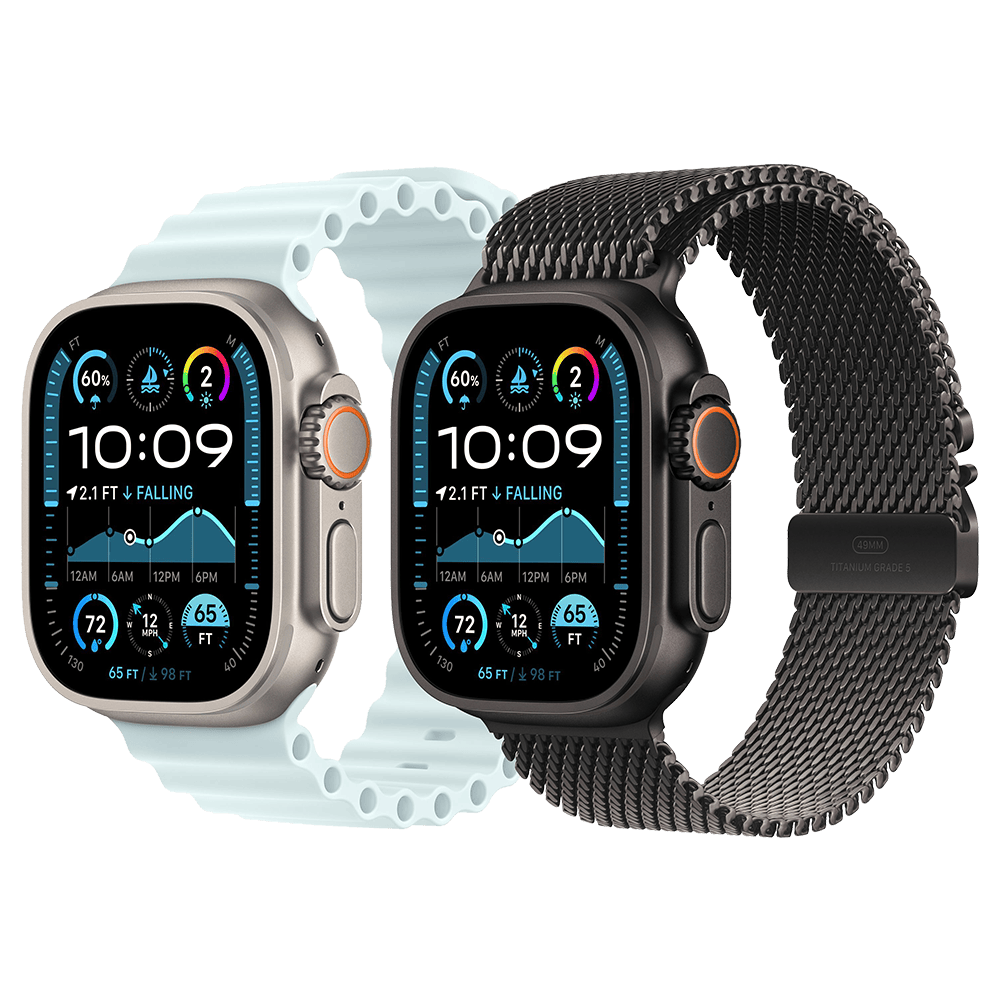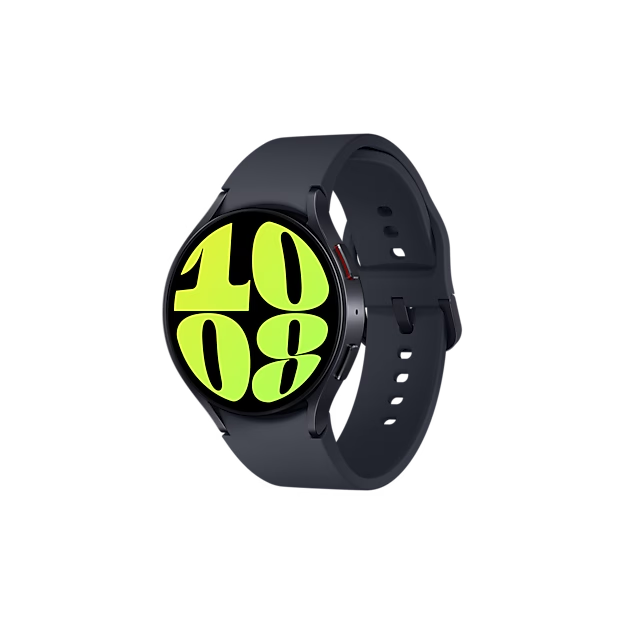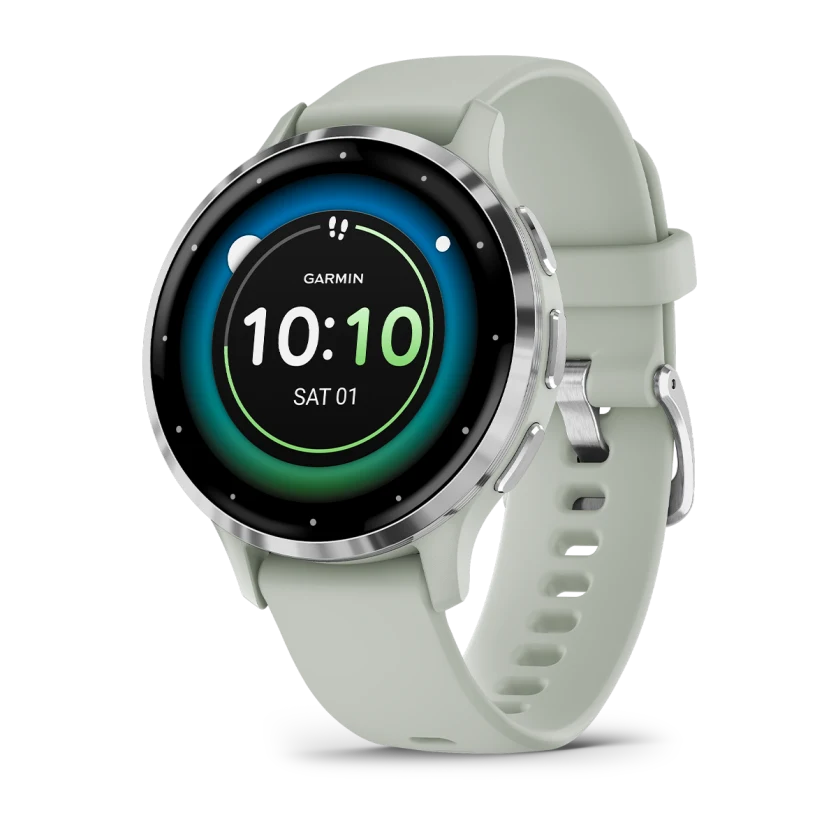The phone and operating system you currently use are the most important factors in determining which smartwatch is best for you.
You’ll likely be searching for an Apple Watch if you want a watch that pairs with your iPhone without any issues, lets you use third-party apps, lets you check your messages while you’re on the go, and doesn’t mind a shorter battery life.
Similarly, Wear OS and companies like Google and Samsung typically offer the greatest Android experiences.
Our years of testing experience have taught us that the best way to choose a smartwatch is to choose the one that works best with your smartphone, even though there are some fantastic platform-agnostic options from companies like Garmin, Nothing, and Amazfit.
If you’re a true fitness enthusiast, though, you might also want to look at the wide selection of best running watches and best Garmin watches, which tend to forgo certain communications features and third-party apps in favor of battery life and more focused fitness features.
We have been testing these devices for a very long time and have reviewed every smartwatch available on the market. A health and fitness specialist evaluates each product and assigns a score based on its features, performance, design, and affordability.
During our testing periods, we get at least a few workouts in and completely drain the battery to see if it holds up to normal use.
However, a large number did not make the cut.
Therefore, whether you’re searching for a fantastic Wear OS, a Samsung Galaxy, or a new Apple Watch.
Table of Contents
- Samsung Galaxy Watch 7
- Apple Watch Ultra 2
- Samsung Galaxy Watch 6
- Google Pixel Watch 3
- Garmin Venu 3
TOP 5 BEST SMARTWATCH 2025
1 : Samsung Galaxy Watch 7

The Galaxy Watch 7 ought to be at the top of your list if you’re searching for a smartwatch to go with your Samsung phone.
Similar to the previous model, it costs $299.99 and offers Galaxy AI’s holistic health insights along with updated gesture controls, a dual-frequency GPS, more storage, and a faster processor
We observed slightly inaccurate readings for running distances and sleep durations during testing, and the short battery life is still perplexing, but neither drawback is sufficient to significantly reduce its allure.
The OnePlus Watch 2 is still worth a look for the same price if battery life is a major concern, but overall, the Galaxy Watch 7’s minor enhancements and AI-powered health insights keep it ahead of the Wear OS competition.
Remember that some of the options mentioned above will cost more. For example, the 44mm version costs $30 more than the base model, and LTE functionality costs an additional $50.
Every color option has the same price.
In this assessment, Samsung furnished the 40mm non-LTE model in a verdant hue, accompanied by a sport band made of green rubber.
Alternative options include a fabric band or a resilient athletic band Notably.
the bands are equipped with a quick-release mechanism at the base, enabling the user to exchange them according to the situation.
Although they can be effortlessly detached, reattaching the bands proved to be somewhat challenging; one must apply sufficient pressure to the button to ensure a secure connection on both sides.
In general, the respiratory rate and the sleep-stages charts matched across the three devices.
The heart-rate readings on Samsung and Apple devices were comparable.
I didn’t have any snoring or sleep apnea symptoms, and I appreciated that Samsung included features like a skin temperature graph, sleep score, and sleep score that helped me gauge how well I slept overall.
The watch typically deducted points for the amount of time I slept, but it gave me credit for restfulness, mental recovery, and physical recovery.
Pros
- Accurate heart rate measurements
- In-depth sleep monitoring
- AI health insights
- Responsive touch and gesture controls
Cons
- One-day battery life
- Slightly inaccurate running distance and sleep time measurements
2 : Apple Watch Ultra 2

The Apple Watch Ultra 2, priced at $799, maintains its sizeable and costly character, yet introduces a black titanium finish.
In conjunction with this novel color option, an array of complementary bands are available, among which is a titanium iteration of the Milanese Loop, designed for high-speed aquatic sports and scuba diving.
The durable smartwatch boasts a captivating 3,000-nit display, which is 50% brighter than its predecessor’s screen, ensuring enhanced visibility under intense sunlight.
Furthermore, it offers approximately 55 hours of battery life per charge, extending its operational duration by almost a complete day.
Throughout this review, the Ultra 2 is shown on my 6-inch wrist for reference.
I like a smaller watch, such as the 40mm Watch SE or the 42mm Series 10, for comfort and style. Like the previous generation, I occasionally get skin irritation from the Ultra 2’s nubby digital crown.
Apart from its size, the Ultra 2 sets itself apart from other Apple Watches with a more robust case, an adjustable orange Action Button on the left side, a more tactile digital crown and right side button that are better suited for gloved hands, a brighter display, an upgraded dual-speaker system and three-microphone array, an 86-decibel emergency siren, a 40-meter (131-foot) underwater depth gauge, and more.
The Ultra 2 runs watchOS 11, the most recent version of Apple’s smartwatch operating system, which offers new Flux and Reflections watch faces, new Tides and Translate apps, Training Load insights to help you decide how hard to push yourself, and FDA-cleared sleep apnea notifications.
The Series 10 also has a depth gauge, but it only goes as far as six meters, or about twenty feet.
All three Apple Watches are incompatible with Android phones and require an iPhone XS or later running iOS 18 or higher.
The compatibility of the second-generation Ultra model extends to first-generation straps, as well as Apple Watch bands of sizes 44mm and 45mm.
In the context of this appraisal, I examined the black titanium Ultra 2 variant, paired with a dark green Alpine Loop strap, a carbon-neutral ensemble.
The manufacturer also provided supplementary bands, all featuring black titanium fastenings to harmonize, such as the Trail Loop in black (carbon neutral) and the Ocean Band in an alluring Ice Blue hue.
Previously, I have also evaluated the natural titanium Ultra 2 with an Orange/Beige Trail Loop, and the original Ultra with an Ocean Band in yellow and an Alpine Loop in starlight.
Pros
- 3,000-nit display
- Powerful processor
- Expanded operating altitude
- Carbon-neutral build options
- Excellent connectivity features
Cons
- Expensive
- Inactive blood oxygen sensor
3 : Samsung Galaxy Watch 6

I’ve had the Samsung Galaxy Watch 6 for a whole week.
I’ve been using Samsung Health to monitor my water intake, running, sleep patterns, and overall level of activity.
I tested the functionality of various third-party apps on Samsung’s One UI Watch 5 using Whatsapp, Spotify, Strava, and others.
The quick screen refresh rate and responsiveness of the apps we tested make the overall experience incredibly smooth, and the external and internal design is attractive.
Most importantly, I’ve depleted the battery and tracked how much the watch’s battery lasts during GPS exercises.
In the end, it has the potential to displace the Samsung Galaxy Watch 5 from the top of our list of the best smartwatches.
Samsung claims that the Watch 6 is “the best device on the market for monitoring your sleep.
It’s an iterative upgrade in many ways, but an upgrade nonetheless, even if it doesn’t quite improve on the Watch 5’s flaws enough to earn a rare five stars.
The Watch 6 has some cool new features, including a redesigned Sleep app experience, increased processing power and RAM, and the ability to store documents other than cards, like airline tickets, in Samsung Wallet.
All things considered, the Watch 6 is a fantastic gadget—possibly the greatest Wear OS watch I’ve ever used.
There are four different models of the Galaxy Watch 6, and that’s before you take into account the Classic model.
There are two sizes: 40mm and 44mm.
Both can be purchased as Bluetooth-only or LTE models, the latter of which allows you to access the internet without a phone.
While the 44mm models are $329.99 for Bluetooth-only and $379.99 for LTE connectivity, the 40mm models in the US start at $299 for Bluetooth-only and $349 for LTE.
In the UK, the 40mm Bluetooth model costs £289, the 40mm LTE option costs £339, and the 44mm Bluetooth-only and 44mm LTE models cost £319 and £369, respectively.
The case has also had to be slightly modified because the Samsung Galaxy Watch 6 has a slightly thinner bezel than the Watch 5.
The watch does, however, look a lot like its predecessor because the screen sizes and button functions are the same.
This is not a bad thing the Samsung Galaxy line of watches has a great super AMOLED screen with a high refresh rate and smooth transitions, and they look good with the appropriate face selection.
The Watch 6 is, in Samsung’s words, “the best device on the market for monitoring your sleep.
It’s an iterative upgrade in many ways, but an upgrade nonetheless, even if it doesn’t quite improve on the Watch 5’s flaws enough to earn a rare five stars.
Additionally, a redesigned Sleep app experience and a new Custom Workout option let you create multi-stage workouts.
All things considered, the Watch 6 is a fantastic gadget—possibly the greatest Wear OS watch I’ve ever used.
I’ve had the Samsung Galaxy Watch 6 for a whole week.
I’ve been using Samsung Health to monitor my water intake, running, sleep patterns, and overall level of activity.
I’ve tested the functionality of various third-party apps on Samsung’s One UI Watch 5, including Spotify, Strava, and WhatsApp.
The user experience is incredibly smooth thanks to the apps’ quick response times and screen refresh rates, and the device has a nice internal and external design.
Most importantly, I’ve depleted the battery and tracked how much the watch’s battery lasts during GPS exercises.
Pros
- Good app selection
- Digital bezel for quick scrolling
- Excellent sleep insights
- Active skin temperature sensor
- Reliable automatic workout detection
- Two case sizes, optional LTE connectivity
Cons
- One-day battery life
- Minor workout heart rate accuracy issues
4 : Google Pixel Watch 3

With exceptional performance in fitness tracking and health monitoring, the Garmin Venu 3 is a fantastic smartwatch choice.
With its amazing battery life, it is ideal for people who spend a lot of time traveling far from a charger and who want to track metrics in great detail with regard to their workouts.
It is also very capable when it comes to making calls, but its texting capabilities are limited.
Its app ecosystem is decent but not as extensive as that of the Google Play Store or Apple App Store, and its visually appealing display lags slightly behind the leaders in the field.
In our most crucial test metric, the Garmin Venu 3 performed worse than the leading models from Apple, Samsung, and Google.
Nevertheless, it demonstrated that it is a capable watch with enough features, apps, and functions to be a practical accessory on your wrist that makes daily chores more convenient.
Weather, music, and navigation are among the simple yet user-friendly proprietary apps available on the Garmin Venu 3 under the name Garmin IQ.
Thankfully, Garmin’s ecosystem of apps, available in the Connect IQ app store, is fairly extensive and includes a large selection of fitness-specific watch faces, data fields, widgets, music streaming services, and other features.
Our team measured battery life as our third test metric, which was weighted to 20% of each model’s overall score.
Our runtime and charging tests showed the Garmin Venu 3 to be pretty amazing.Out of all the smartwatches we tested, the Garmin Venu 3 offers the most advanced fitness metrics.
To perform better, you would need to switch from smartwatches to real fitness-tracking wearables, and many of those models would still be insignificant.
With its vast array of activity-specific modes, the Venu 3 tracks data with ease using the Garmin Connect app.
In addition to monitoring heart rate and steps with simple reporting, the Garmin Venu 3 offers fitness tracking for over sixty different workout types that is unmatched by some of the most powerful smartwatches.
Unlike other smartphones, you can examine and modify all of your workout data using the Garmin Connect app or the web-based interface.Another exclusive feature of the Garmin Venu 3 is LiveTrack.
When it comes to fitness tracking, the Garmin Venu 3 isn’t flawless, but LiveTrack uses GPS to create a real-time view of your location during workouts and activities that you can share with friends and family.
Although our test team noticed a few minor inaccuracies in step counting and some discrepancies in treadmill workout detection and accuracy, which are typical of fitness trackers, overall our complaints are small, making it difficult to evaluate this watch critically in terms of fitness and health.
Pros
- The 45mm version boasts significantly longer battery life, potentially lasting over 36 hours, and charges quickl
- The Pixel Watch 3 features a larger, brighter display with slimmer bezels, offering a more visually appealing and usable experience
- Includes workout intensity metrics, daily readiness, and custom workouts
Cons
- There are no new sensors compared to the Pixel Watch 2
- The Pixel Watch 3 is relatively expensive
5 : Garmin Venu 3

Since the first Pixel Watch came out in 2022, I’ve been waiting for Google to improve its smartwatch even more by adding features that make it feel more like a workout coach and proactive assistant than a device for seeing notifications and recording workouts.
With the $350 Pixel Watch 3, Google is getting closer to that goal while also providing two different size options and improving the display and battery life.
All things considered, the Pixel Watch 3 is an improvement over the Pixel Watch 2 from the previous year thanks to its bigger screen, quicker charging on the smaller model, new metrics for gauging workout intensity, and tools for creating personalized runs.
The features that give me hope for the future include the Morning Brief digest, AI-generated running workouts, and additional uses for the Daily Readiness Score.
All of these features work together to make the watch a more intelligent exercise partner and help me avoid reaching for my phone as frequently.
However, there is still room for improvement.
Given the company’s strong efforts to integrate Gemini into the Android ecosystem, its absence seems like a strange decision.
There is a greater need for better voice-forward AI companions on a device as small as a smartwatch, but the Pixel Watch is still only compatible with Google Assistant.
Numerous fitness-related enhancements made to the Pixel Watch appear to be primarily geared toward outdoor running, which throws off the user experience for other types
Pros
- Long battery life
- Comprehensive health and sleep metrics
- Helpful reports and insights like Body Battery and Morning Report
- Large screen
- No subscription required to access health metrics and reports
Cons
- Design doesn’t feel as premium as other similarly priced watches
- Small app ecosystem
- Slow app downloads
- Separate apps for managing health insights and watch faces
- No home button
How to choose the best smartwatch for you
Unfortunately, since not all wearables are compatible with rival devices, your choice of smartwatch frequently depends on your phone preference. Only Apple iPhones are compatible with the Apple Watch.
You can use a Samsung watch with a Google phone and vice versa, but Google watches and other Wear OS devices only function with Android smartphones.
Although Fitbit’s fitness tracking wearables can be used with any device and sync with the Fitbit app, those devices typically have a stronger emphasis on fitness features and don’t have all the features and apps that other smartwatches have. If you’re switching from a Garmin watch that lasts weeks, the majority of wearables only have a day’s battery life, which is disappointing. This list includes a few watches with longer lifespans.
Lastly, smartwatches can be costly, and to be honest, they don’t provide much value for the money. Consider whether you plan to go scuba diving this year or if you just want to check your text messages without disturbing your dinner companions before spending a fortune on an Apple Watch Ultra.
Can you use Apple Watch with an Android phone?
The first thing you should do is see if the smartwatch you want and your phone are compatible.
Since iOS is required to interface with all of watchOS’s features, you cannot use an Apple Watch with an Android phone.
Although you can use a Fitbit or Google Pixel Watch with an iPhone, the experience will be significantly lessened if you don’t have an Android or Google account.
For Samsung and Huawei to function at their peak, handset-watch synergy is also necessary.
However, a lot of gadgets, such as Garmin watches and the CMF Watch Pro by Nothing, only need their own apps to function, so you can use them with either phone without any issues.
Which is the best smartwatch?
The best smartwatch in 2024 is the Apple Watch Ultra 2, but it requires an iPhone to use. If you have an Android device, the best alternative is the Galaxy Watch Ultra
How we test smartwatches
The knowledgeable staff at TechRadar has thoroughly and thoroughly examined each smartwatch on this list, so we know exactly what powers them.
To ensure that every smartwatch is thoroughly tested in real-world settings, we use the devices as though they were our own personal wearables during the review process.
To give us a clear picture of how battery life functions, a thorough feature sweep is conducted and usage is varied over the course of a week.
When conducting internal testing, we typically compare each smartwatch’s GPS accuracy to a market leader like the Garmin Epix Pro. The same is true of workout metrics.
We also rank the watch’s market position, third-party app compatibility, and operating system usability. For instance, a low-cost watch with fewer features is more likely to receive four stars than a high-end watch with numerous features that isn’t worth the high cost.
We then used that information to rank them, taking into account their performance, features, design, and value to arrive at an overall star rating.

